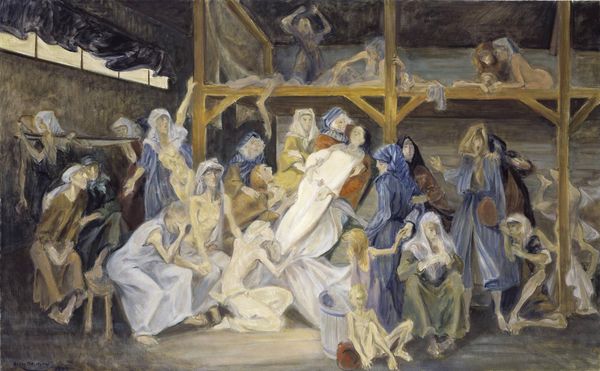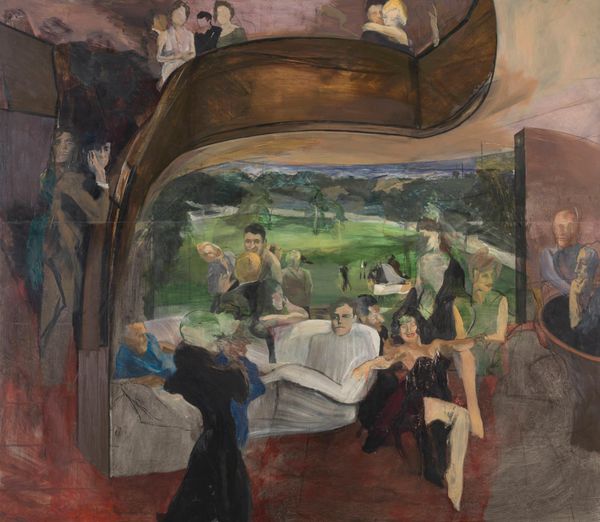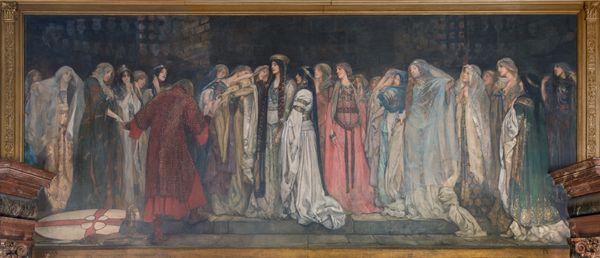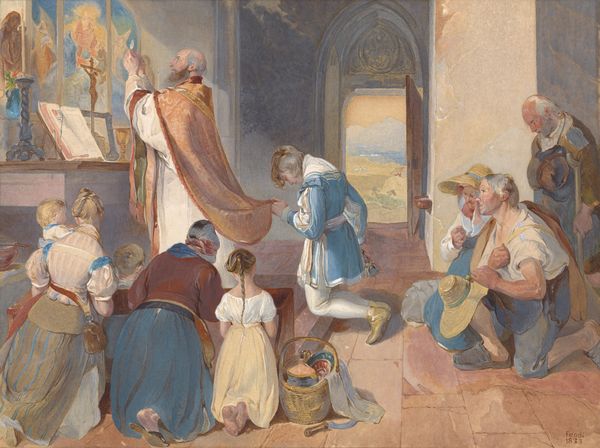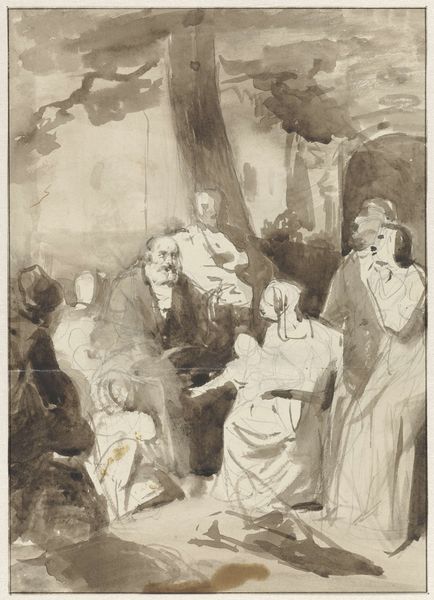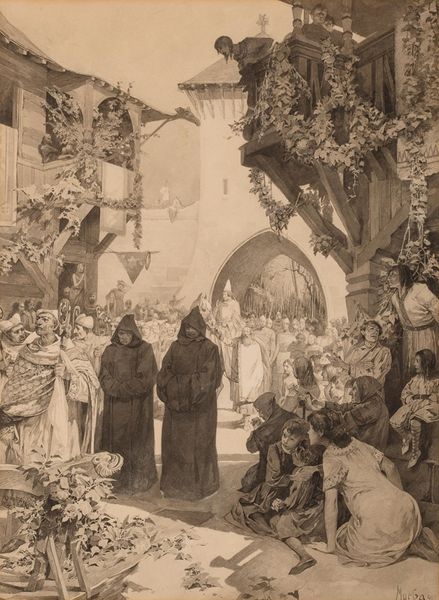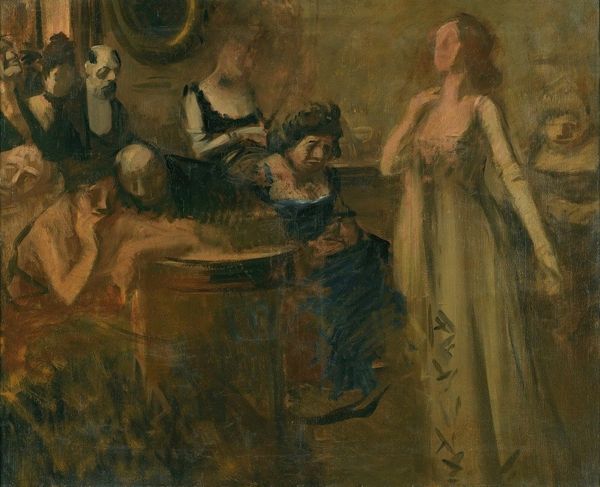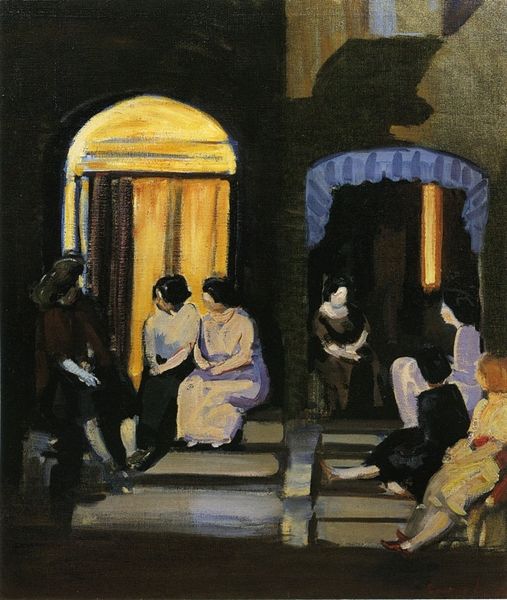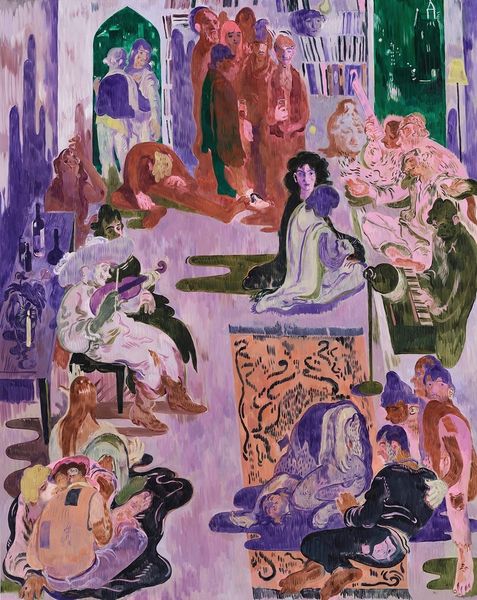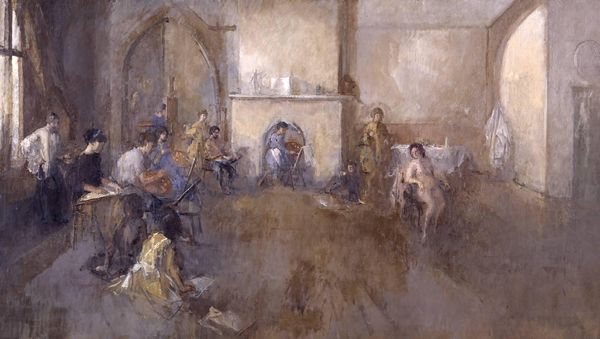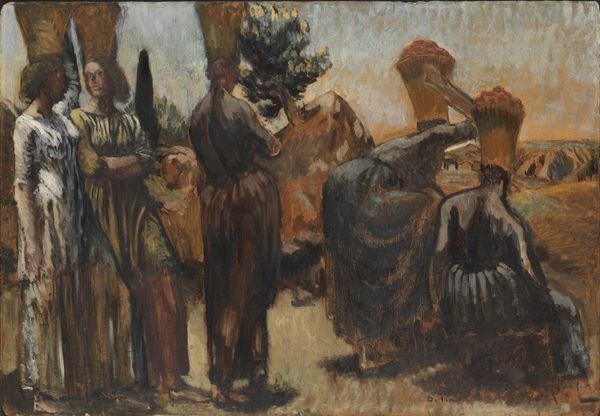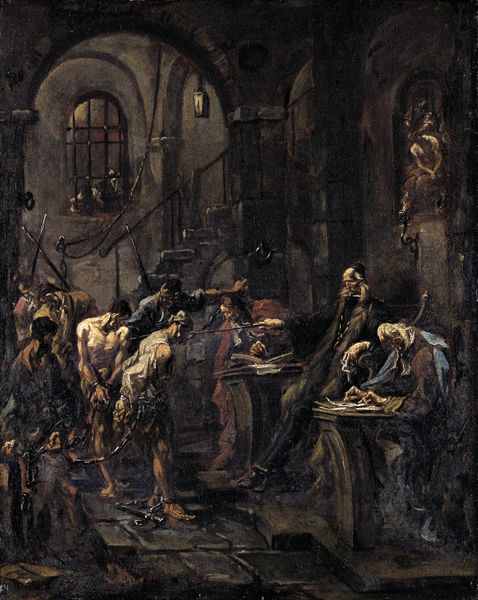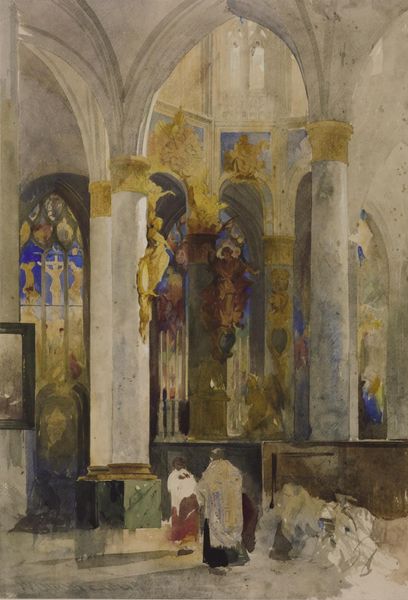
Dimensions: support: 2743 x 5486 mm
Copyright: © Tate | CC-BY-NC-ND 4.0 DEED, Photo: Tate
Editor: Here we have Stanley Spencer's "The Resurrection, Cookham," a massive canvas teeming with figures emerging from their graves. The sheer scale is overwhelming, but what strikes me most is the intimacy of the figures. What symbols do you find most resonant in this piece? Curator: The most powerful symbol for me is the recurring motif of embracing. Notice how many figures are locked in an embrace, signifying not just reunion but also the overcoming of earthly isolation. Spencer repeatedly used embracing as a form of spiritual connection and a visual representation of love's triumph over death. Editor: That's fascinating. I hadn't considered the embraces as a central symbol. Curator: It's a powerful visual language, right? Spencer uses the familiar image of the embrace to convey a profound emotional and spiritual truth. Editor: So, would you say that focusing on repeated images helps the viewer understand Spencer's intent? Curator: Absolutely. By noticing how Spencer repeats the embrace motif, we can better comprehend the cultural memory embedded in this image. We recognize love and reunion, finding common ground across time through visual symbolism. Editor: I'm going to pay more attention to the symbols and the feelings they evoke. Curator: It will open a new door into the artwork.
Comments
tate 7 months ago
⋮
http://www.tate.org.uk/art/artworks/spencer-the-resurrection-cookham-n04239
Join the conversation
Join millions of artists and users on Artera today and experience the ultimate creative platform.
tate 7 months ago
⋮
As a devout Christian, Spencer believed in a joyful day of resurrection. Everyone would be raised from the dead to receive judgement or glory. Here he depicts this taking place in the churchyard of Cookham, the Berkshire village where he lived. God and Christ watch as people emerge from their graves. Most of the white people are local friends or specific biblical figures. By contrast, Spencer represents the group of Black people at the centre of the painting in a generalising way. They are not based on people he knew, but on images he saw in National Geographic magazine. Gallery label, December 2022
